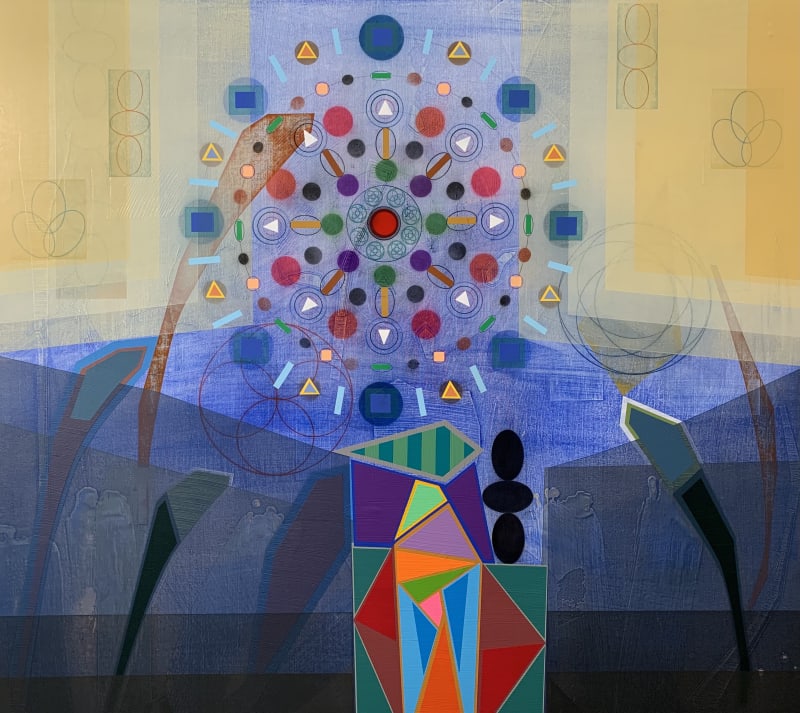"In an age in which disbelief is so profoundly prevalent or, if not disbelief, indifference to questions of belief, poetry and painting, and the arts in general, are, in their measure, a compensation for what has been lost." –Wallace Stevens
We've all had experiences which seem to connect us to a larger existence. We are transported to a threshold of new understanding and resonance. As a visual artist, I celebrate this unique human capacity - I channel sensations, emotions, and ideas, producing a unique voice which lives in the work that I make.
Gee's Bend quilts, cave art, sacred sites, nature forms, sacred texts, ancient rituals, jazz music, and poetry: these are some of my starting points, as they may trigger this sense of expansion of self into a more resonant, communal life.
Each painting I make is a symbol. They are not directly definable by rationality, and remain open-ended in meaning, existing as objects for our imagination and intuition to decipher. These paintings are rich in detail and subtle in their construction, so I like to think that the viewer will enjoy a slow, rewarding revelation with extended looking. Using acrylic paint, modeling paste, charcoal, graphite, colored pencils, and pastels, I build up a stratified surface of intention and fortunate accident. I often lay down the paint in pieces, masking off forms, just as a quilter fits together swatches of fabric. I enjoy this piling on of one pure color with another, as it vibrates with visual energy, and may produce a strong emotional response, one beyond the reach of words. In a pleasing contrast to these heavier, bold forms of color, I draw lyrical shapes of smudged pigment or fine lines. I use templates to trace circles and ovals, enjoying their groupings into organic forms, or their existence as trails of fading linework. I finish the surface with satiny glazes of oil paint (patinas, veils?) which appear in subtle squares, biomorphic shapes, and other boundaries. Suggesting faded parchments or fresco walls, this surface speaks of accumulated histories. In the end, the work reveals itself gradually, just as an archaeological site sheds its collective history.
I make a rigorously formal art, but I have faith that this meditative system of replication and mantra-like activity will produce objects of joy, warmth, and plentitude. And rather than explaining away the work, I again have faith that these objects will operate on their own terms, leaving the viewer to enjoy the literal act of seeing.
–Michael Barringer, Winter 2022

